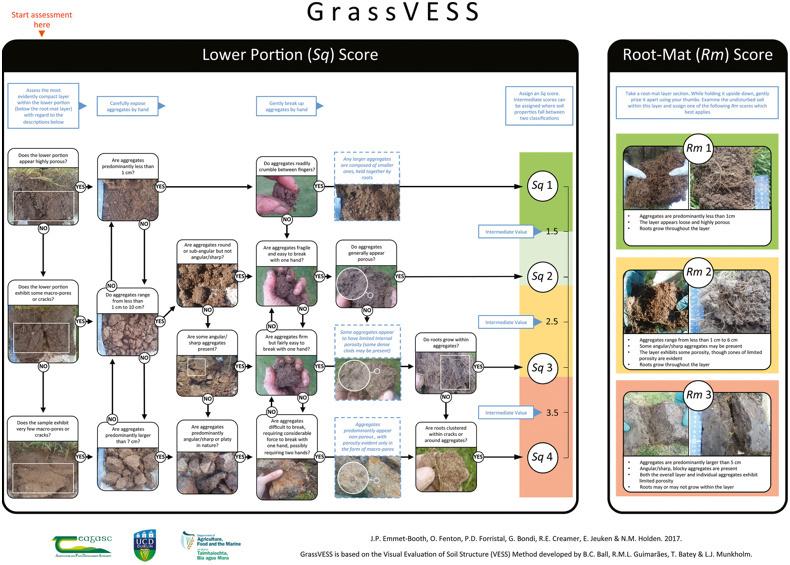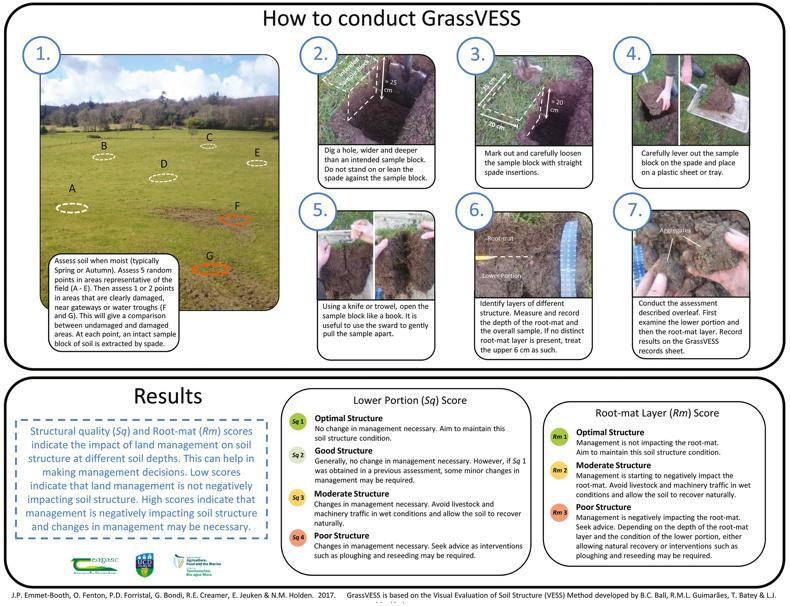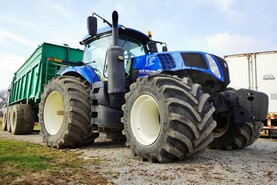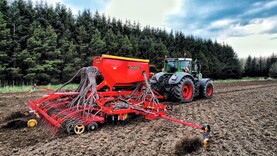Grassland farmers can now measure the degree of compaction in their soil with a new tool developed by Irish researchers.
Scientists from Teagasc, UCD and IT Sligo adapted the Visual Evaluation of Soil Structure (VESS) method, mostly used by tillage farmers, to take into account the importance of root matting in grassland.
All you need is a spade and a flowchart produced by Teagasc with pictures and yes/no questions. Carefully lift a clod of grass and soil the size of a shoebox and answer the illustrated questions on the flowchart, starting with: “Does the lower portion appear highly porous?”

The GrassVESS flowchart

How to conduct GrassVEss
Depending on each answer, the analysis of the sample will guide you to an ultimate soil quality (Sq) score. Sq 1 is the best and Sq 4 is the most compacted. The test also assigns a root matting (Rm) score from Rm 1 (good) to Rm 3 (poor).
Demonstrating GrassVESS at the recent Smart Farming walk in Co Offaly, David Wall of Teagasc took two samples in a field – one at the centre and the other from a more heavily trafficked headland. The second sample showed roots were in contact with soil only 2in deep. “The goose is cooked in terms of what you can do with it,” Wall said. Using the flowchart, he gave the middle of the field a score of Sq 2.5 to 3, while the headland near the gate scored Sq 4.
“If you need to reseed or plough the area, you know what to do,” he said.
Research on GrassVESS started in 2016, including its evaluation against more advanced soil analysis techniques and testing on a focus group of UCD students. In a paper published earlier this year in Soil Use and Management, the journal of the British Society of Soil Science, the Irish team concluded that “GrassVESS was found to be quick, straightforward and reproducible” and “can be used by a range of users on an ongoing basis to aid real-time grassland soil management”.
The authors recommended further research to evaluate the method in other regions of the world and use root matting scores as an early warning system for soil compaction.
“For example, fertiliser or slurry application may be inappropriate on areas classified as Rm 3,” they wrote.






 This is a subscriber-only article
This is a subscriber-only article









SHARING OPTIONS: